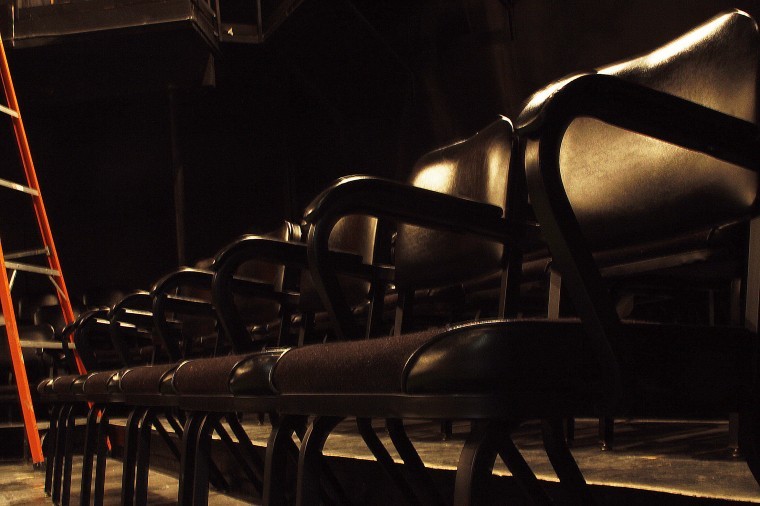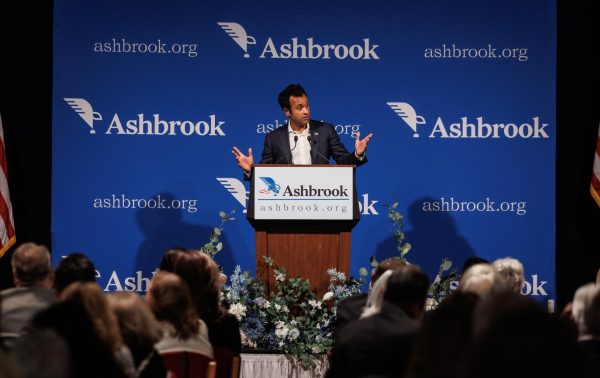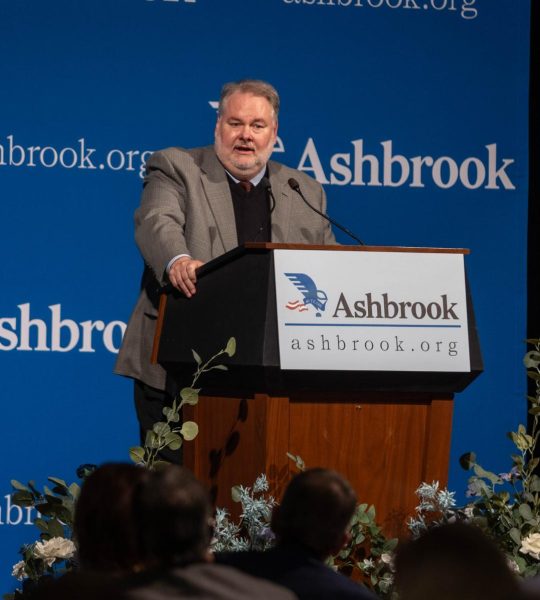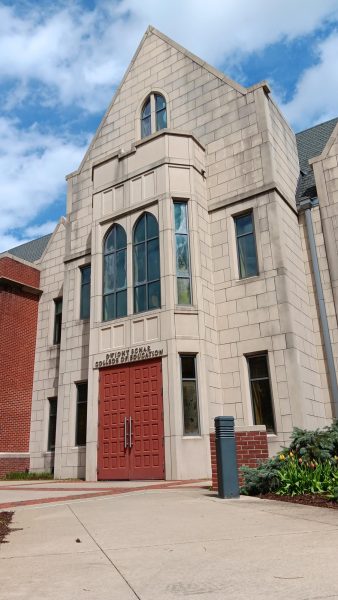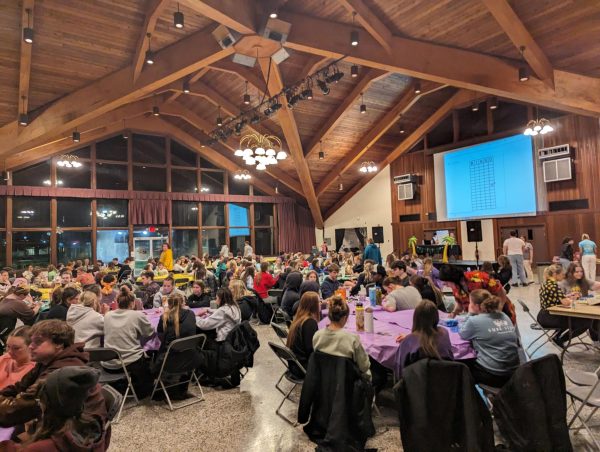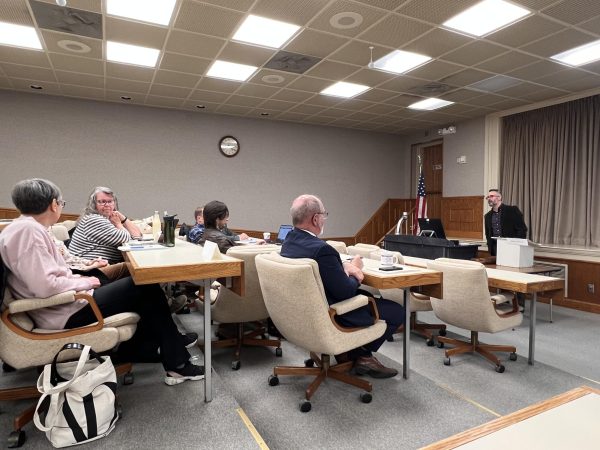Surplus leads to million-dollar upgrade
The floor these chairs stand on in the Studio Theater will soon be replaced, thanks to surplus money in this year’s budget. A new lighting board and lighting instruments will also be purchased for use in the Studio Theater and Hugo Young Theater.
March 3, 2011
Half a million dollars’ worth of new technology and other resources will soon spruce up numerous departments around campus due to a surplus in the budget this year. Another $500,000 will also be added to several departments’ base budgets, meaning the funds will be permanently available each year.
“After taking about eight years of cuts, we finally have the opportunity to put some money back into budgets,” Provost Dr. Frank Pettigrew said. “That’s a million-dollar upgrade to the academic affairs side of the institution, which is the primary objective of the institution – to educate their students.”
Pettigrew said the surplus came from several sources, including increased enrollment this year, which is in part due to the acquisition of the College of Nursing. The university has also saved a “significant” amount of money by being more conservative with energy, he said.
Dr. Dawn Webber, dean of the College of Arts and Sciences, said the surplus funds are the result of “wise budget conservation at the start of the year.”
About $500,000 in one-time funds will be allotted to departments within the Academic Affairs Division of the university, which includes the four colleges, the library, the registrar’s office and other departments that report to Pettigrew.
The other $500,000 will be incorporated into the base budgets. Those funds will be available every year for the foreseeable future, according to Pettigrew.
The deans and directors within the Academic Affairs Division were asked to submit requests for one-time expenditures their departments could use. Each person then presented his or her requests to Pettigrew and the other deans and directors. To help prioritize the list of requests, everyone voted for the resources they felt would most benefit Ashland University.
“What I emphasized was the idea that we should think about the university and not your own program,” Pettigrew said. No one was allowed to vote for their own request, he added.
The Academic Council, which includes all of the deans, looked at the results and “tweaked” them, Pettigrew said. He had the option to make additional changes before submitting the requests to the president’s cabinet for final approval.
The one-time funds must be spent before June 30, the end of the fiscal year. The president’s cabinet has already approved $250,000 to be spent; the second half of the money is expected to be approved by April, according to Pettigrew.
Approximately $300,000 of the one-time funds has been allocated to the College of Arts and Sciences. The rest of the one-time expenditures will go to other colleges and departments in the academic side of the university.
Already-approved purchases and other improvements for CAS include new technology for the Hugo Young Theater and the Studio Theater, new computers for the graphic design lab in the art department, a new transmitter and a new mixing board for WRDL, new marching band uniforms and the renovation of several pianos in the Center for the Arts.
If the second $250,000 is approved, CAS will also acquire new video cameras for the journalism and digital media department, and new digital cameras and lenses for Collegian photographers.
“Some of our arts and science programs are very equipment intensive,” Webber said. “We have not had the resources built into our operating budget. We’re replacing the equipment that has outlived its life expectancy.”
For example, the current band uniforms are 16 years old, she said, while the lighting boards in the theaters are no longer supported by companies that made them, meaning replacement parts are not available for sale.
Due to the age of the equipment in the two theaters, the new technology for the theater department will be one of the biggest expenditures for the CAS with the surplus funds.
The lighting boards in both theaters will be replaced and new lighting instruments will be purchased specifically for the Studio Theater. According to Dr. Theresa Durbin-Ames, chair of the theater department, the current lighting instruments are shared by both theaters and don’t fit with the size of the space in the Studio Theater.
The theater department also does not own enough lighting instruments to fully support events held simultaneously in both theaters.
“Having additional lights will allow us to better use both spaces and juggle [shows], and will allow us to have the right instruments that work best in the Studio Theater,” Durbin-Ames said.
Purchasing new lights will also allow the department to upgrade to newer technologies, including moving lights that can sweep across the stage and change color.
“[Students working in lighting] will be able to create different effects to support the mood of the show,” Durbin-Ames said.
In the past, Ashland’s theater department has rented or borrowed specialty lights like these for specific shows, such as “Secret Garden” (in the 2007-2008 season) and “Marisol.”
But professional theaters use this technology on a regular basis and some high schools in the region already have their own.
“This is…technology that our students will encounter in a professional theater,” Durbin-Ames said. “It’s going to help them when they’re out in the industry.”
The strip lights across the back of the stage in Hugo Young will be replaced with newer technologies, including multi-colored lights and some LED lights. This technology allows one lighting instrument to produce multiple colors and effects instead of using gels, the older method of shading a light with a colored cover.
“It’s new technology that’s just coming into theatrical lighting and our students will have the opportunity to work with it,” Durbin-Ames said.
The floor in the Studio Theater will also be replaced.
“The history of the Studio Theater space is that it was never intended to be a theater,” Durbin-Ames said. Because of this, the floor has been repainted “countless” times to adapt the space for new shows, she said.
The rigging grid (where lights and curtains are hung) in the Studio Theater will also be updated and the rigging in both theaters will be inspected to insure safety.
“I think it’s going to help as a recruiting tool for students,” Durbin-Ames said. “It’s a morale booster for current students. Theater students in the Center for the Arts see a lot of great things happening across campus and I think they’ve been wondering, ‘when is it our turn?’ It’s exciting to see the university recognize work that’s done.”
Webber agreed that the new technology in the theaters and other departments will help attract new students.
“Whenever you have state-of-the-art equipment installed, it helps attract prospective students and prepares our students for acquiring jobs and to make a contribution in an organization when they’re hired,” Webber said. “This is just phenomenal news for our college.”
One expected purchase that will affect the entire campus community is comprehensive scheduling software. Housed in the registrar’s office, the program will be used to organize events campus-wide by keeping track of information such as which rooms are being used and when, as well as how many seats are available in classes.
Pettigrew said the university runs into problems with the current system because events are scheduled “piecemeal” and sometimes they overlap.
Other expected purchases include SMART Boards for classrooms in the library, collections of online journals for the library, computers for the second through sixth floors of the library (the first floor computers were replaced last fall) and assistive instructional equipment such as special keyboards and electronic book devices for Classroom Support Services.
The other $500,000 will be incorporated into the operations and personnel budgets of various departments and colleges on campus each year.
The bulk of that sum – about $290,000 – will be used to fill four faculty positions in the College of Business and Economics to help them prepare for national reaccreditation next fall, according to Pettigrew. He said that COBE has been in need of new faculty for several years.
The College of Nursing will receive $40,000 for administrative support.
CAS will have $40,000 added to their budget for the repair and replacement of equipment and inventory, such as laboratory supplies in the science departments. CAS will also receive $5,000 for the replacement of musical instruments.
Pettigrew said the university has more students enrolled now with hearing-related disabilities, so $20,000 will be allocated to the Office of Disability Services for the cost of interpreters and other related services.
The library’s operational budget will increase by $15,000 for purchasing resources such as databases. The honors department will also receive $15,000.
The surplus funds will also allow some faculty members to work less hours, leaving them with more time to do individual research and more time for students, Pettigrew said.
In the past, most faculty members had a 21-hour course load instead of the current 24-hour load.
“We had to suspend it when we had our fiscal crisis a couple years ago,” Pettigrew said, referring to the 2008-2009 school year when numerous staff positions were cut due to the state of the economy and other financial issues facing the university.
Now, about 15-20 professors will be able to go back to the 21-hour load. Any professor can apply to be one of the 15-20 selected.
Pettigrew said he is most excited about the ability to add funds to the base budgets.
“To start putting money back into the operational budgets is something we’ve longed for for eight years,” he said. “Not only does it help deliver these programs but it helps the quality.”
Pettigrew added that increasing operational budgets is significant because it has a long-term impact on the university. These additional funds will remain a part of the budgets, allowing each college and department to continue to use them for additional resources and improvements each year.


